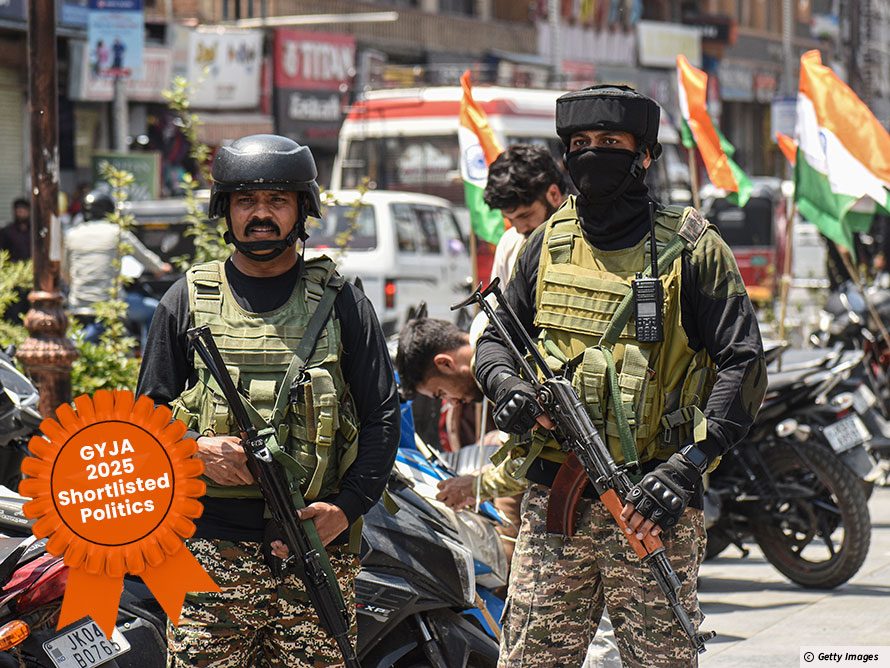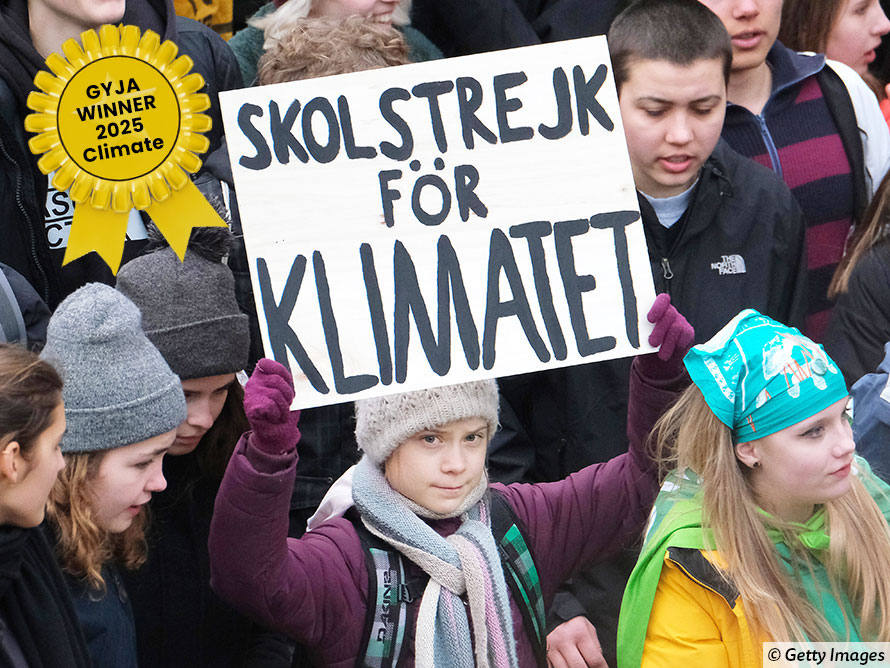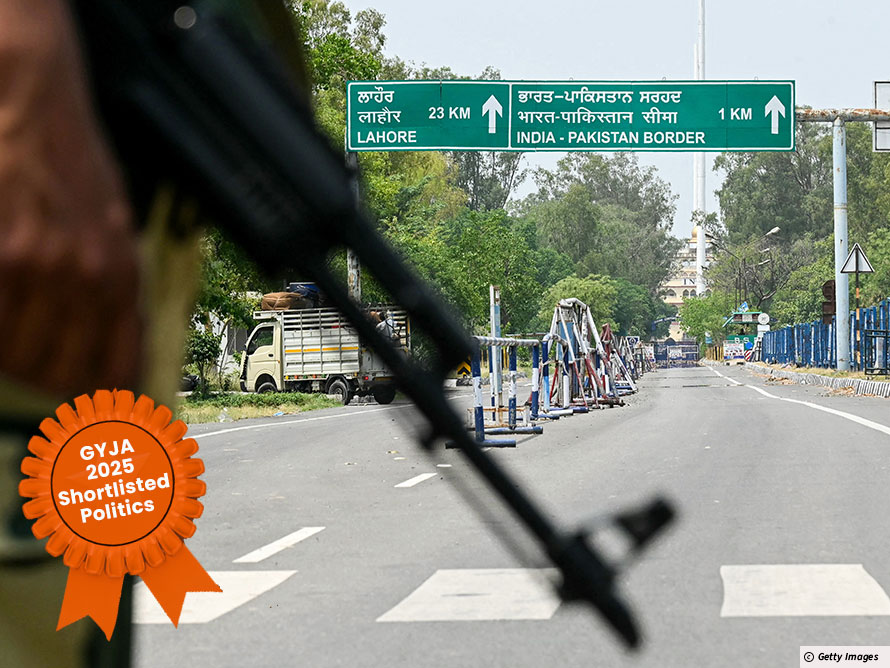War is a futile pursuit, and borders drawn by blood do no good, argues Reet Narula, 14, from Shiv Nadar School Noida, India.
When the sun set over the Indian subcontinent on 14th August 1947, no one predicted the horrors about to be unleashed. Trains overflowed with passengers, carrying them across newly formed borders. In Amritsar, Indian PunjabA state in northern India, bordering Pakistan. , an attack on a train carrying Muslim refugees resulted in 3,000 dead and merely 100 passengers left uninjured. Death was not the only consequence; it led to a long-standing conflict over a volatile territory — Kashmir.
India and Pakistan now stand on the threshold of their fourth war over Kashmir. I believe that preventing another Indo-Pakistan war is extremely crucial. On 22nd April, 26 tourists in Indian-administered Kashmir were killed. A two-week face-off between the countries followed, ending in a ceasefire. But the question stands: with the unpredictable nature of conflict, how long will this ceasefire hold before war breaks out?
There are countless reasons why a war must be contained but the most important rationale is the sheer destruction caused. In the case of the ongoing Russo-Ukranian war, one million people died and 4 million Ukrainians were internally displaced. In the current conflict, Pakistani statements claim that 40 civilians died from missile strikes whereas India says that 100 terrorists were killed, with a loss of 16 Indian civilians. Historically, Indo-Pakistan wars have given rise to numerous moral crimes. During the 1971 War for the Independence of Bangladesh, 4 lakh Bangladeshi women were raped. But massacres are not the only outcome.
Democracies crumble and economies are destroyed in the aftermath of war. Following the 1965 Indo-Pakistan war, the people of Pakistan protested against their leaders, leading to the President’s resignation. Similarly, India too grapples with internal tensions like communal divides. It is predicted that in the event of a full-scale war stretching beyond six weeks, a 20% contraction in the GDPShort for Gross Domestic Product, the measure of all the goods and services produced inside a country. of both countries would be experienced. Political instability in Pakistan is highly anticipated, considering conflicts with Balochistan and a $130 billion debt.
Besides the economy, war ruins the environment. This impact is a silent suffering, as seen by the lack of legal doctrines. The ongoing tensions have left agricultural lands cratered. Once fertile and sustaining, the Earth now lies scarred by conflict. If the land itself is ravaged, is it worth fighting for?
The possibility of war is one that every global citizen needs to prevent. India and Pakistan are powerful nuclear nations with an arsenal of 180 and 170 nuclear warheads respectively. Furthermore, South Asia is a region of interest for powers like the USA, Russia, and China, and thus, a nuclear war can cause escalation. Can the conflict over Kashmir end in a third world war?
As I come to the end of this piece, I stand with the idea that war benefits no one. The next battle may not just redraw borders; it might obliterate them. Our world, already stretched thin by environmental collapse, economic fallout, political instability, and possibly nuclear conflict, gives us a final choice.
Will we continue to let history repeat itself, or will we finally choose peace over pride?
Interested in submitting your own Student Voices article or video? Find out more here.
Keywords
Punjab – A state in northern India, bordering Pakistan.
GDP – Short for Gross Domestic Product, the measure of all the goods and services produced inside a country.
- “1947 Amritsar Train Massacre,” Everything Explained Today. https://everything.explained.today/1947_Amritsar_train_massacre/. Accessed May 24, 2025.
- “The Forgotten Genocide of Bangladesh,” Organiser. https://organiser.org/2019/09/26/125033/bharat/2_11_19_37_a_1/. Accessed May 24, 2025.
- “Seven Decades, Twenty Bailouts: Inside Pakistan’s Endless Dance with the IMF.” Republic World. https://www.republicworld.com/business/seven-decades-twenty-bailouts-inside-pakistans-endless-dance-with-the-i mf. Accessed May 26, 2025.
- “The Economic Costs of Conflict Between India and Pakistan,” Dawn. https://www.dawn.com/news/1907921. Accessed May 23, 2025.
- “Top 9 Nuclear-Armed Countries in 2025: Where Do India and Pakistan Rank?” The Indian Express. https://indianexpress.com/article/trending/top-10-listing/top-9-nuclear-armed-countries-in-2025-where-do-india-an d-pakistan-rank-9917761/. Accessed May 26, 2025
Cite
While every effort has been made to follow citation style rules, there may be some discrepancies. Please refer to the appropriate style manual or other sources if you have any questions.














